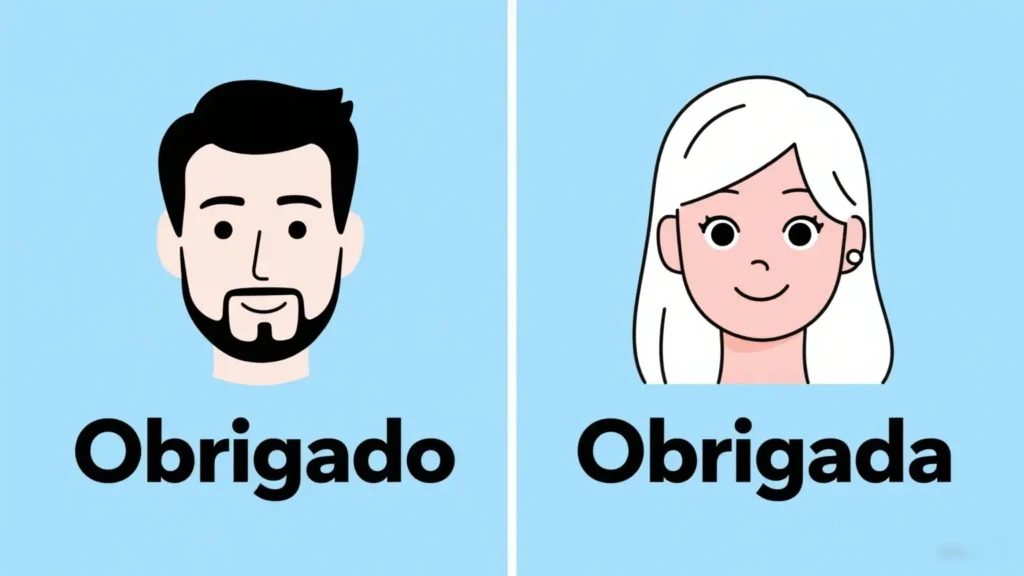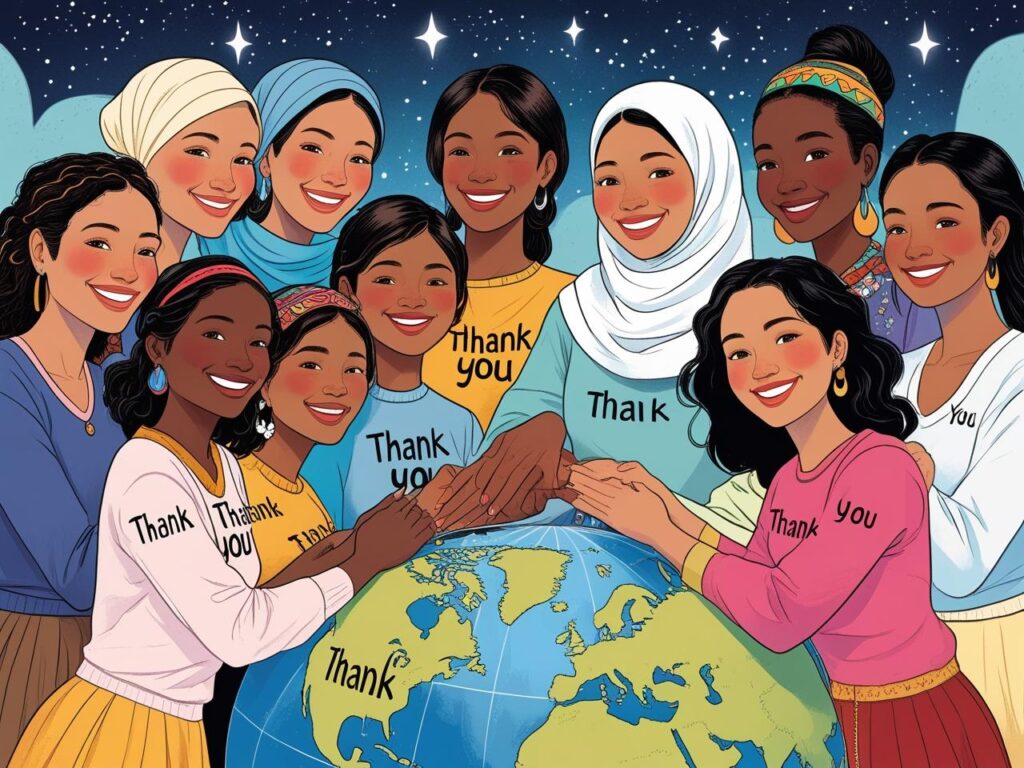Saying “thank you” is a very prevalent act and generally used in all countries. It can be applied to perpetuate the habit of being grateful to the person who gave you a compliment, opened the door for you, or handed you a small gift. Also, “thank you” is the simplest of words that is said quickly, but it is incredibly weighty and impactful.
However, though they are understanding, the cultural differences in the way it is said and responded to are very great. This blog post is to show as technically polite as possible the gratitude that people carry around the world and is expressed not only in language but also in their local manners, customs, and cultural beliefs of what they think gratitude is or should be.

Why “Thank You” Isn’t Always Just Words
Many individuals take “thank you” for granted and think that it’s the only way to appreciate another person but it is not so, use of nonverbal actions such as gestures, face expression, body posture, and silence are included in the list also. It is also common in some cultures to use non-verbal expressions such as gestures, posture, or silence to convey their gratitude.
For instance, in the USA, it is common practice to say thank you several times a day, and mostly it is done even for very insignificant things like passing the salt or holding an elevator. In some other countries such as Germany or China, the Germans are not likely to carry out that practice, but it’s not odd, it can still make them feel awkward. In this case, showing gratitude through acts is preferable to using words that are constantly spoken. For example, in the USA, the exchange of gifts, or leaving space so that one can pass, are ways of expressing gratefulness that does not rely on words.
Being aware of these differences can help you not only avoid unintentional offense but also truly connect with other people.
Saying Thank You in Japan
The Japanese culture is one that is really warm and culturally full of gratitude expressed with considerable respect and politeness. To say thank you in Japan, the most common ways are “Arigatou” and “its more formal version” “Arigatou gozaimasu,” the latter being the standard way. In the local culture, the act of bowing is to a large extent compulsory in expressing one’s politeness to others. The more humble and respectful the bow, the more grateful you feel and show. It is a usual thing to bow slightly when you thank someone for the ordinary deeds, and to bow deeply in more official matters or serious situations such as the case of getting a hand in your work or being a guest at someone’s place.
Saying Thank You in France
One could consider that the polite way to say thank you in France is “Merci,” and if you are feeling generous, “Merci beaucoup,” that is, “Thank you very much.” The French are very big on being appreciated sincerely and a good way to show gratitude is using the right tone. Depending on the people you are dealing with, you could give a congratulatory kiss on each cheek (la bise) to show thanks to your friends or family, but this would be wrong in business or formal interactions. While conducting business matters, a merely “Merci” or sending a follow-up thank-you email shows that you are considerate and respectful.
Die Dank in Deutschland
Most people in Germany will use “Danke” or “Vielen Dank” as a formal thank you statement. As a part of their “thank you” etiquette, German‘s might include ‘Ich danke Ihnen’ in more formal interactions for indicating deep respect towards. Germans would rather have plain and direct communication and not that of expressive cultures. However, although they do have a strong appreciation for gratitude, too much hard-hitting and deviant voices of gratitude can be felt as false. Be sure to give a sincere and well-timed thank you, usually accompanied by a firm handshake or nod, to show your gratitude sincerely.
Saying Thank You in India
Saying thank you in India is different across different regions in language and culture. People from the Hindi-speaking states will most likely say either “Dhanyavaad” or “Shukriya.” People from the southern part of the country may possibly come across such expressions as “Nandri” in Tamil or “Thanks,” in English, and more particularly among the younger generations. In several places in India, however, it is not so much verbally, but through one’s actions that gratitude is usually shown – a slight head nod, both hands put together in greeting (known as “Namaste”), or by really offering other people some sort of help. The verbal “thank you” on the part of the speaker will only be taken as a nice surprise by the thankful person from the same family or circle of friends — it was not looked for but was pleasant when received.
Saying Thank You in Brazil
In Brazil, the word for thank you is gender-specific. Men say “Obrigado,” and the word for women is “Obrigada.” Brazilians are outgoing and sociable and, therefore, their “thank you” is typically accompanied by a smiling face, direct eye contact, and often a handshake or hug, thanks to the level of familiarity. It is customary to show appreciation for a favor, a visit to someone’s home, or the end of a business meeting.

Saying Thank You in China
The most common way to say thank you in China is to use the Chinese word “Xièxiè” (谢谢). Not only is it widely spoken, especially in the urban areas and in more formal situations, but it is the Chinese way of expressing gratitude. The Chinese people believe that actions speak louder than words. So the people in tight relationships and especially in families may not prefer to express their gratitude time and again through the words “thank you.” They will go in for acts of kindness, return the favors, and exhibit respectful behavior. On the other hand, when one is in the professional circle or is with people one does not know, saying “Xièxiè” is definitely the right thing to do, and it will definitely be well received.
Saying Thank You in Thailand
Thanking someone in Thailand depends on the gender of the speaker. The word used by males when saying “thank you” is “Khop khun krub,” while the word which female speakers use is “Khop khun ka”. Non-verbal communication in Thai culture is also very well-established. The “wai” is a traditional greeting and thank-you sign, which is executed by putting the hands together in a prayer-like gesture and making a bow. It is a way of showing respect and gentleness and is therefore a common way of expressing gratitude, particularly when interacting with elders, teachers or in formal settings.
Saying Thank You in Russia
Spasibo is the Russian equivalent of thank you. If you want to add more appreciation to your thank you, then you might also say “Bol’shoye spasibo” which is translated as “thank you very much.” In addition to verbal thank-yous, sincere gestures are also important when dealing with the Russians. Some personal gesture might include, for example, doing a favor for the person or inviting him/her as a guest. Keeping eye contact, using a respectful tone, and speaking appropriately is crucial when expressing gratitude, especially in formal or unfamiliar settings.
Saying Thank You in South Korea
Koreans express gratitude by saying “Gamsahamnida” or “Gomapseumnida”. Their way of showing respect in polite situations is to bow. Practicing the slight act of bowing while saying ‘thank you’ indicates the speakers’ sincerity and respect, particularly in professional or elder-to-younger relationships. South Koreans are known for their love of etiquette, and showing gratitude in the proper manner is an indication of a person’s good character and upbringing.
Avoiding Common Cultural Thank-You Mistakes
Expressing one’s gratitude in another culture can be difficult, especially when this level of politeness is achieved accidentally. Below are a number of typical mistakes:
- Using the language of the wrong sex in the word for grateful (as in Portuguese: “Obrigado” vs. “Obrigada”).
- Having more verbal thanks than necessary in cultures that value more of the pragmatic act than the words (such as Germany or China).
- Not paying attention to the correct ways of body communication, such as bowing in Japan or giving a “wai” in Thailand.
- Not displaying the formal levels of politeness, especially in hierarchical cultures like Korea or Japan (Anonymous, 2020, p.22).
It is very important to notice, learn, and adapt yourself taking the situation into consideration. In case you are unsure, the use of good manners and a cheerful mood together with an honest intention can prevent you from most of the instances of bad mannered behavior.
Much Obliged in International Business Etiquette
In business dealings which are global, it is equally significant to be polite in a professional manner as it is to exhibit that feeling naturally- and this can be done in different ways:
- America and Great Britain accept thank you emails, polite verbiage in the form of “I am grateful for your time”, and handwritten notes as the norm for expressing gratitude (McCarthy, 2009, p.89).
- For Japan, the practice is to combine the formal expression of gratitude with the bow and honorific titles. A small gift in appreciation is frequently seen after important conferences.
- In China, the prevalent way of doing this is offering the gift with hands together and expressing a normally moderate thank you.
- According to French etiquette, it is good manners to follow up with a thank-you email or a note after a business lunch. This is not only appreciated but also means the person is showing good behavior.
Being aware of the unwritten rules of the local business culture can enhance professional relationships and function as concrete input that demonstrates one’s respect for and interest in the cultural environment.
Final Thoughts: Gratitude Connects Us All

Gratitude is a concept that everyone can relate to, except that the ways of expressing it are deeply influenced by the culture in question. Not only does knowing how to say ‘thank you’ politely in different countries add color to your travel experiences but it also enables you to forge the most rewarding relationships, prevent cultural errors, and at the same time, show deep respect. So the next time that you’re on a trip, before anything else, make an effort to know how to say “thank you” using the language of the place you are visiting. However, what’s more important is that you also get to learn how to say it properly—with the right intonation, timing, and body language that is in line with the culture. That’s the least you can do, and yet, it proves to be very effective in changing other people’s perceptions of you